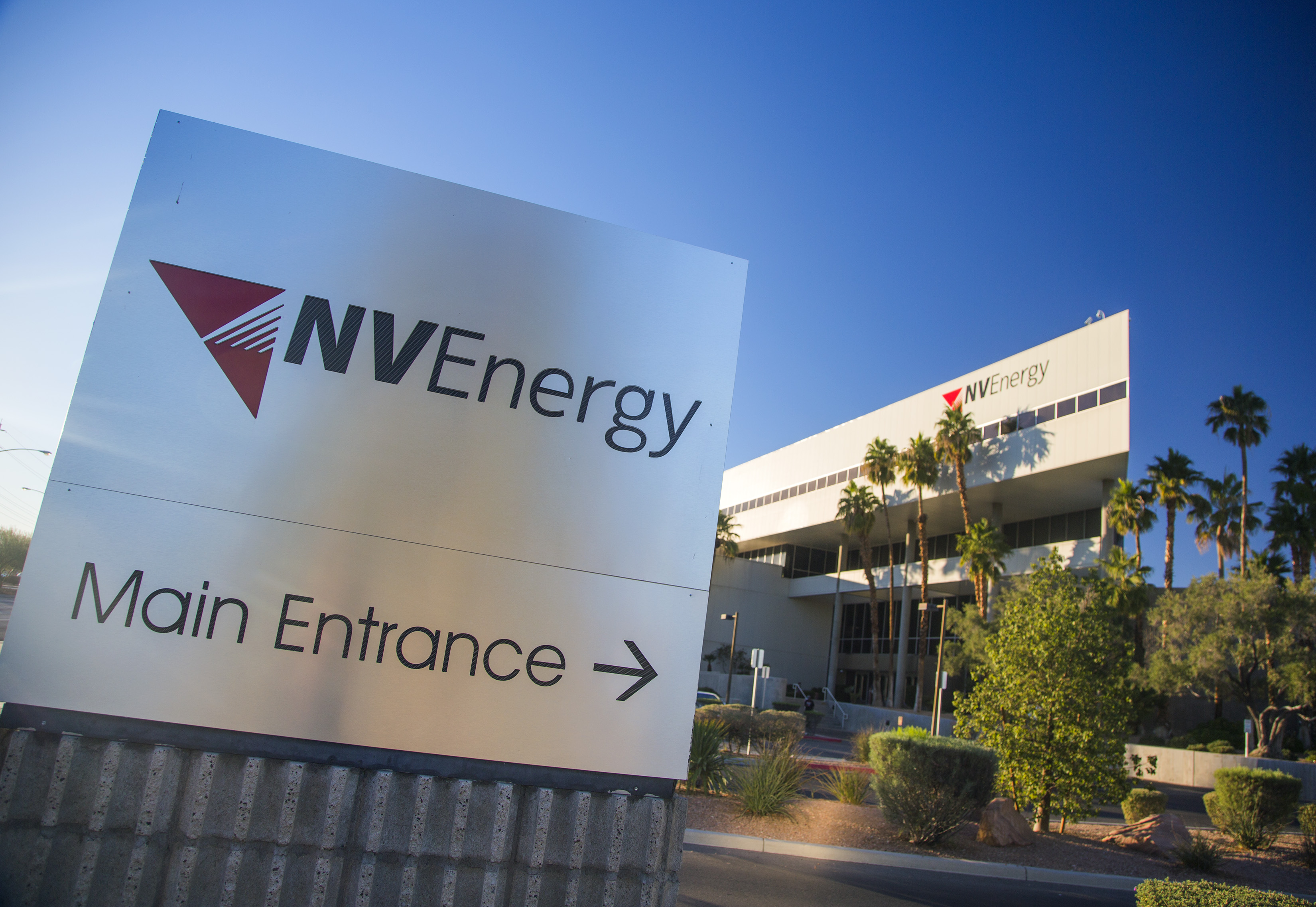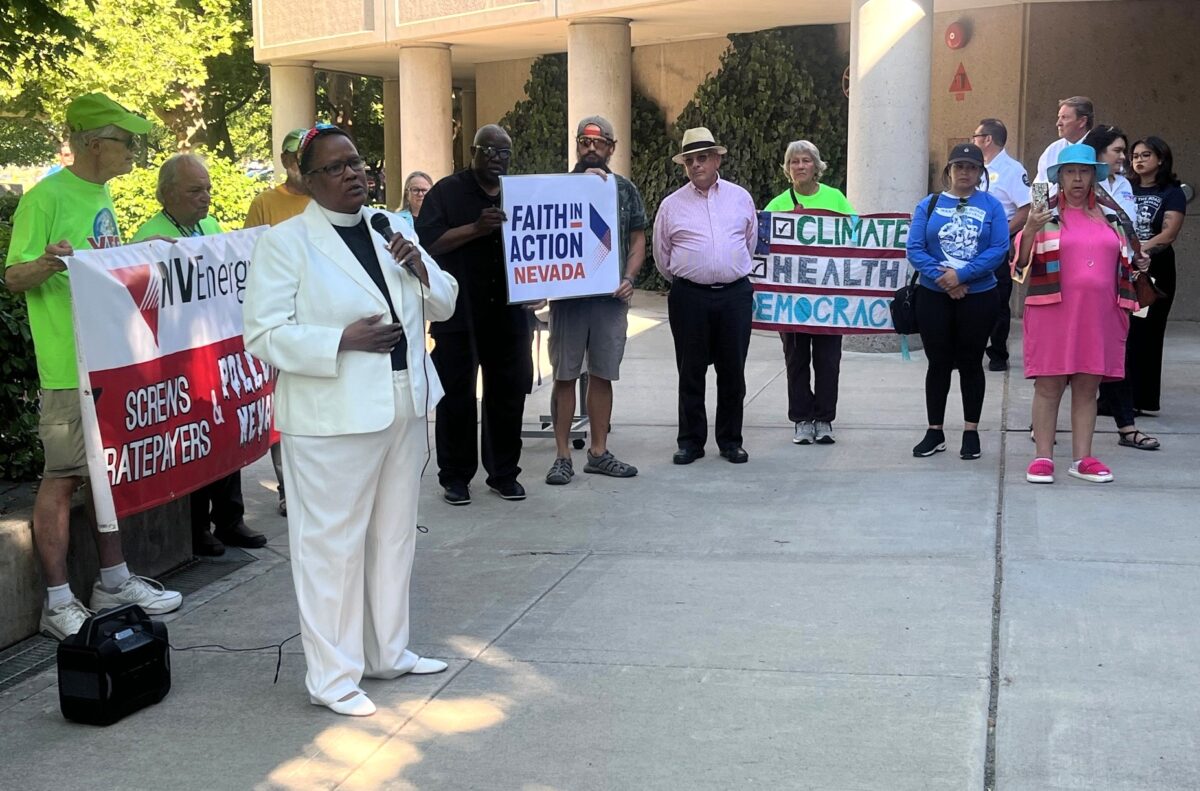Analysis: NV Energy predicts lower bills, but only because of fuel trends out of its control

NV Energy says its proposal to change how power bills are calculated for Northern Nevada customers will result in cost savings, but a new analysis by a clean energy nonprofit shows those savings are based almost entirely on predicted decreases in fuel costs, and that the base structure of the new rates will have customers paying more than they otherwise would.
NV Energy has proposed increasing the monthly charge for service from $16.50 to $45.30 for single-family residential customers in Northern Nevada while decreasing the amount customers pay for actual electricity used. Customers living in multifamily residential housing would see their basic service charge more than double, from $8 to $18.80 per month.
The utility says the change would create more stability for customers by guarding against large seasonal fluctuations in power usage between summer and winter months, and by the end of the year lower average customer bills by 8 percent compared to the end of 2023.
But watchdog group Western Resource Advocates (WRA) analyzed NV Energy’s data and says the proposal would penalize low-income customers and those who curb their power usage through conservation or by adding rooftop solar.
Using metrics from NV Energy’s filing with the Public Utilities Commission of Nevada — the state regulatory board that will either approve or deny NV Energy’s request — WRA found that the proposed new rate structure would ultimately result in higher baseline costs and only structurally benefit customers using high amounts of energy. The utility’s claims that the change will result in savings for all customers, they said, relies on projections about lower fuel costs that are not linked to the changes to the base service charge.
“The utility is using the opportunity of projected lowered bills due to factors outside of their control to mitigate the impact of their own profit increase,” WRA Clean Energy Policy Advisor Emily Walsh wrote in an email.
“While it’s possible that customers will see savings like NV Energy says, it's due to declining fuel prices and not NV Energy’s rate application,” she added.
In 2025, residential natural gas prices are expected to reach their lowest level since 1977 after adjusting for inflation, according to the Energy Information Administration.
Meghin Delaney, an NV Energy spokeswoman, countered that WRA’s analysis breaks down utility bills inaccurately by excluding a major piece of the equation.
“NV Energy considers the whole bill when putting forward proposals, because at the end of the day, that's what customers pay,” Delaney said in an email this week. “It doesn't make sense to try to pull out fuel costs and run hypothetical calculations — customers cannot opt out of those costs on their bills.”
Only high-use customers to see cost benefits
In their application to state utility regulators, NV Energy states that the average Northern Nevada single family residential household uses about 765 kilowatt hours (kWh) of electricity monthly, and that those customers should see a savings of about $7 a month on their power bill under the proposed rate change.
According to the utility, those savings will happen despite the utility collecting an additional $96 million from customers to help cover capital improvement costs in Northern Nevada. That includes expanding service to a growing population and improving technology to fight against cybersecurity threats, as well as addressing a shortfall caused by net metering — credits customers with rooftop solar systems receive for adding electricity to the grid.
The utility is also seeking a higher return on investment for its shareholders.
NV Energy is able to collect that $96 million while customers see lower bills because fuel costs and purchased power expenses are decreasing at a greater level than the overall costs of day-to-day operations, Delaney said in an email.
According to WRA, because NV Energy has no control over fuel prices, which in 2022 were the highest they’d been in nearly 15 years, there is no guarantee that prices will continue to drop and remain low.
More: Indy Explains: Why NV Energy wants to triple Northern Nevada’s base rates
WRA conducted an analysis that held constant or removed fuel costs from the equation while computing the changes proposed by NV Energy to show that the majority of Northern Nevadans would actually pay more than they do now per month under the proposed changes.
Under that analysis, more than 82 percent of Northern Nevada customers would ultimately pay more on their monthly bills under the proposed rate structure. So-called “average” households that use 765 kWh per month will pay a little more than $10 more per month if the proposed rate structure is adopted, according to WRA.
Only households that average more than 1,174 kWh of usage monthly — less than 20 percent of households — would save money on their bills, according to WRA.
NV Energy countered WRA’s claims, stating that removing fuel costs from the equation provides an “inaccurate” representation of what customers pay.
NV Energy monitors fuel price volatility closely, Delaney said, adding that the company’s growing renewable energy portfolio reduces the effects on customers and the utility when prices do change drastically.

‘It’s sickening’
Earlier this month, opponents of the proposed change ranging from Assemblywoman Selena La Rue Hatch (D-Reno) to Pyramid Lake Paiute Tribe leadership gathered outside the Washoe County Commission Chambers for a rally prior to a consumer listening session, the third of three opportunities given by utility regulators for the public to express support or opposition to the change.
“We have to put people first, not profit,” Rev. Debra Whitlock Lax, pastor of Bethel AME Church and a leader for Faith In Action, said to cheers and a round of applause. “NV Energy, be on notice. We’re looking at you. Invite us to the table. We’re your customers.”
The protesters then filed inside to share their thoughts with a panel of state energy regulators and representatives from NV Energy leadership and the Bureau of Consumer Protection. About half of the roughly 70 people gathered in the chambers spoke against the proposal over a several-hour period — the other attendees opted not to speak.
Janet Wells, vice president of regulatory at NV Energy, said that an increase in bills “is definitely not the case.”
“In 2023 … we heard feedback from you, our customers, and we worked to incorporate that feedback as we prepared this filing,” Wells said. “[The proposed change] does not increase the amount an average customer pays monthly ... making this change is important because it more accurately reflects the fixed cost of service for our customers.”
There are nearly 500 residences on the Pyramid Lake Paiute Tribe’s reservation that rely on NV Energy for power, Edward Ely, vice chair for the tribe, told the panel. Ninety five percent of those households have low or moderate incomes, and 225 of those are senior households.
Last year, the tribe received 32 emergency requests from those seniors when they could not afford to pay their electric bills.
“The basic service charge increase … will create more of a hardship for residents on the reservation, especially our elders,” he said.
Northern Nevadans with rooftop solar told the panel the proposal is a “death knell for solar” in the state and “sickening.”
“I am one of those people who will be hardest hit by this insane rate hike,” said Rachel Rakaczky, who recently switched to solar and is on a fixed income. “It doesn’t matter how many nice words that you use, it’s sickening when you take money from poor people to give it to rich people.”
